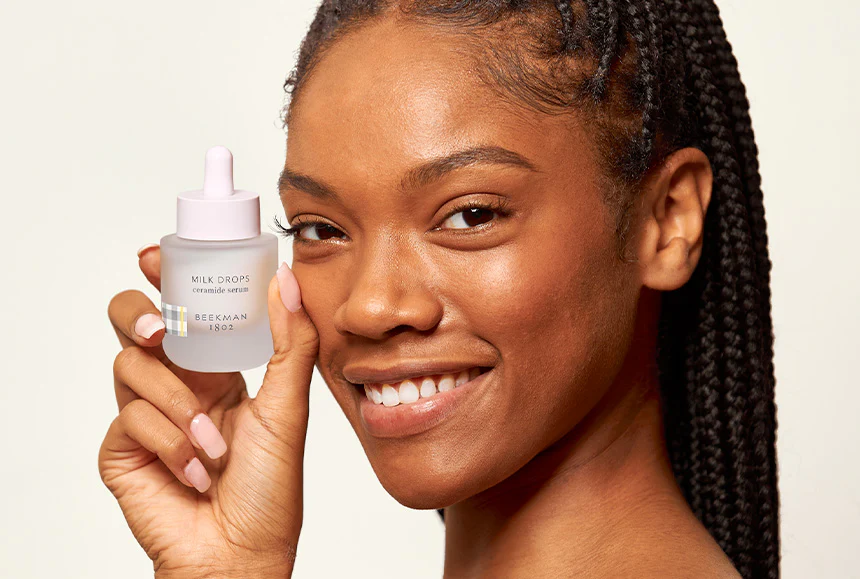Blackheads are one of the most common and stubborn forms of acne, caused by clogged pores filled with excess sebum, dead skin cells, and debris. While there are many products available to treat them, few are as effective as a salicylic acid peel, especially when done correctly at home. A chemical exfoliant known for its deep pore-clearing ability, salicylic acid can help unclog pores, reduce blackheads, and improve overall skin texture.
This guide covers everything you need to know about using a salicylic acid peel safely at home, from choosing the right concentration to step-by-step instructions and tips for post-peel care.
What Is a Salicylic Acid Peel?
Salicylic acid is a beta-hydroxy acid (BHA) derived from willow bark. Unlike alpha hydroxy acids (AHAs), which are water-soluble and work on the skin’s surface, salicylic acid is oil-soluble, meaning it penetrates deeper into pores to dissolve oil and debris.
A salicylic acid peel is a chemical exfoliation treatment that uses this acid in higher concentrations—typically 10% to 30%—to improve clogged pores, blackheads, and acne. It’s especially beneficial for oily and acne-prone skin types.
Benefits of a Salicylic Acid Peel for Blackheads
- Unclogs pores deeply: Dissolves sebum and dead skin inside pores.
- Reduces blackheads and whiteheads: Minimizes the chance of future breakouts.
- Improves skin tone and texture: Exfoliates dull, rough skin and reveals a smoother surface.
- Fights acne-causing bacteria: Has natural antibacterial properties.
- Decreases inflammation: Calms redness and irritation around acne-prone areas.
Step-by-Step Guide: How to Do an At-Home Salicylic Acid Peel
What You Need:
- Salicylic acid peel solution (10–20% for beginners)
- Gentle cleanser (pH balanced)
- Cotton pads or a fan brush
- Baking soda and water (for neutralization)
- Moisturizer (fragrance-free)
- Sunscreen (SPF 30 or higher)
Instructions:
- Cleanse your skin thoroughly: Use a gentle, non-stripping cleanser to remove dirt, oil, and makeup.
- Pat your skin dry: Your skin must be completely dry to avoid the acid spreading unevenly.
- Apply the peel: Use a cotton pad or fan brush to apply a thin, even layer of salicylic acid solution to the affected area. Avoid the eyes, lips, and any broken skin.
- Leave it on for 1–5 minutes: First-time users should start with 1–2 minutes. You may feel a slight tingling sensation.
- Neutralize the peel: Mix 1 tablespoon of baking soda with 1 cup of cool water and gently pat the mixture on your face to stop the acid action.
- Rinse thoroughly: Wash your face with cool water and gently pat it dry.
- Moisturize: Apply a hydrating, non-comedogenic moisturizer immediately after the peel.
- Apply sunscreen: Daily SPF is non-negotiable after chemical peels, even if you stay indoors.
Table: At-Home Salicylic Acid Peel vs. Over-the-Counter Blackhead Treatments
| Feature | Salicylic Acid Peel | OTC Blackhead Products |
|---|---|---|
| Penetration Depth | Deep (into pores) | Surface-level or shallow |
| Active Ingredient Strength | 10–30% salicylic acid | 0.5–2% salicylic acid |
| Frequency of Use | Weekly or biweekly | Daily |
| Visible Results | Often seen after 1–2 treatments | Slower, over weeks |
| Best For | Stubborn blackheads, oily skin | Mild congestion |
| Cost | Moderate (initial purchase) | Ongoing, lower cost |
Tips for Success
- Start slow: Begin with a 10% concentration once every two weeks before moving to stronger formulations.
- Always patch test: Apply a small amount to the jawline and wait 24 hours to check for adverse reactions.
- Avoid active ingredients before and after peeling: Don’t use retinoids, benzoyl peroxide, or AHAs for at least 48 hours before and after the peel.
- Moisturize consistently: Salicylic acid can be drying, so replenishing your skin barrier is key to healing.
Risks and Precautions
Though at-home salicylic acid peels are generally safe, improper use can cause irritation or chemical burns. Avoid using peels on:
- Broken or sunburned skin
- Sensitive areas like the eyelids or lips
- Skin conditions like eczema or rosacea
Always read the manufacturer’s instructions and consult a dermatologist if you have concerns.
Long-Term Maintenance
After successfully incorporating a salicylic acid peel into your routine, maintain your results with gentle exfoliation, pore-friendly products, and proper sun protection. For those struggling with seasonal flare-ups or body acne, combining targeted treatments with a broader care approach—like implementing Summer Beauty Tips for Acne-Prone Body Skin—can offer comprehensive improvement across all skin areas.
FAQs: At‑Home Salicylic Acid Peel for Blackheads
Q1: How often should I do a salicylic acid peel at home?
A: Start with once every two weeks. As your skin builds tolerance, you may increase to once per week if needed.
Q2: Can I use this peel on other parts of the body?
A: Yes, salicylic acid peels can be used on the chest, back, and shoulders—but patch test first to avoid irritation.
Q3: Is purging normal after using salicylic acid?
A: Yes, a short-term purge may occur as impurities rise to the surface. This usually resolves in 1–2 weeks.
Q4: What should I avoid after the peel?
A: Avoid sun exposure, exfoliants, and harsh skincare ingredients for at least 48 hours. Stick to calming, hydrating products.
Q5: Will the peel get rid of blackheads permanently?
A: No, but it significantly reduces them. Consistency is key for long-term control and prevention.
Final Thoughts
An at-home salicylic acid peel for blackheads is a powerful, cost-effective way to unclog pores and improve skin clarity. When done properly and sparingly, it can be more effective than over-the-counter options, particularly for oily and acne-prone skin types. Always start with a low concentration, prioritize post-peel care, and never skip sunscreen.
By pairing targeted treatments like salicylic acid peels with a well-rounded skincare approach, you set your skin up for long-term success and clarity. Whether you’re refining your facial routine or exploring broader self-care habits, this treatment can serve as a valuable cornerstone in your journey to clear, healthy skin.







